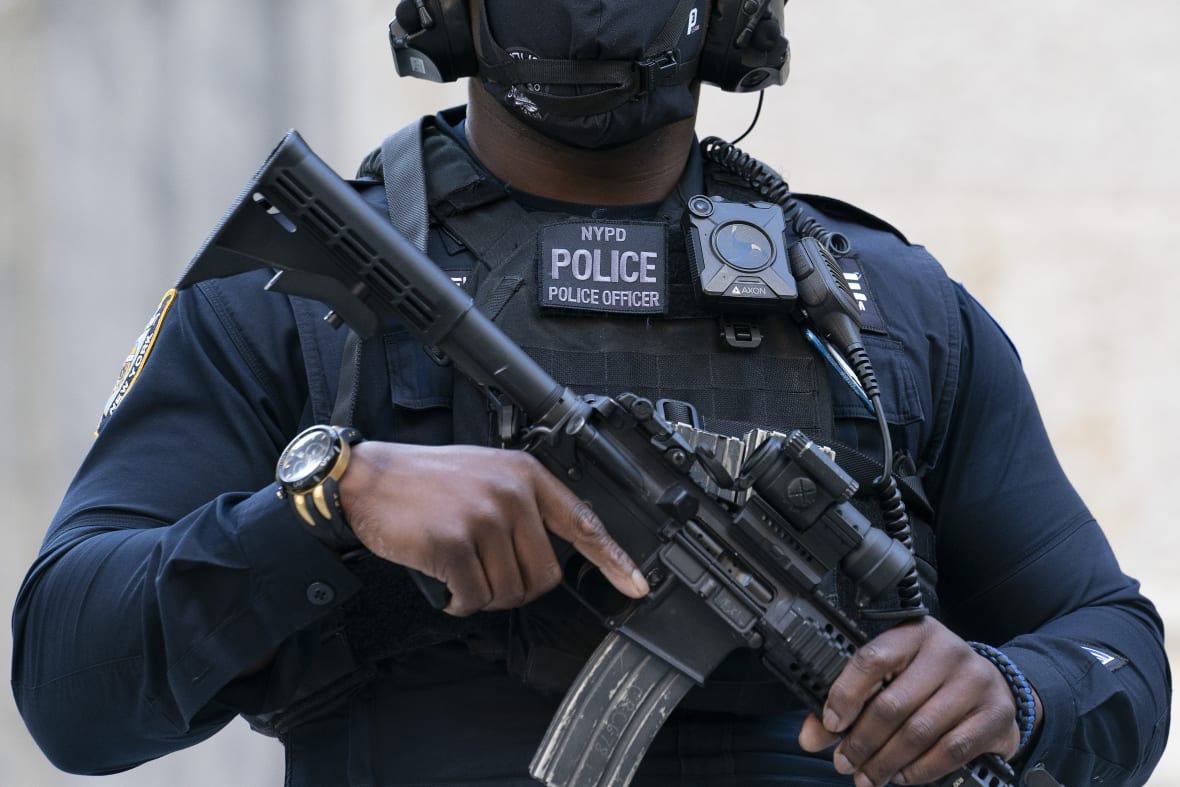Police body camera use led to fewer citizen complaints, research shows
Studies have been mixed on whether body cameras reduce police use of force, said a director from Police Executive Research Forum.
WASHINGTON (AP) — Body cameras have proliferated in law enforcement agencies in the U.S. over the past decade, amid mounting scrutiny over how officers and agents interact with the communities they serve. They’re forcing major changes in how policing is done, even as research is mixed on their effectiveness.
The Associated Press sat in on a discussion of the law-enforcement tool with representatives from more than 200 agencies nationwide, hosted by the think tank Police Executive Research Forum.
New York City became one of the first large departments to adopt body cameras in 2013 after a federal court found police wrongly targeted minorities with a stop-and-frisk program, and many more joined amid the national outpouring of protest after the 2014 death of Michael Brown at the hands of police in Ferguson, Missouri.

An influx of federal money accelerated the process, and by 2016, 80% of large departments were using them, according to the most recent Justice Department data. Federal agencies have been slower to adopt them.
Though public protest of police violence was one of the key driving factors in the ramp up of body camera use, studies have been mixed on whether they reduce police use of force, said Meagan Cahill, the group’s research director. Half show officers with cameras tend to use force less often, but the rest of studies show no difference.
“These technologies aren’t like a light switch, where you switch it on and all of a sudden you’re getting the desired outcomes,” said Nancy La Vigne, director of the National Institute of Justice, the Justice Department’s research arm. “So much rests on policy and implementation.”
Policies around when and how they must be activated, and whether to implement technology that turns them on automatically, are a big question, she said.
Research has consistently found, though, that complaints from citizens decrease when officers begin using them, Cahill said. Exactly why isn’t clear, though it’s possible an awareness of being filmed affects the behavior of both officers and the people they interact with.
While complaints haven’t necessarily decreased since police got body cameras in Fargo, North Dakota, they have given people on both sides a new view on what happened in heated situations, said Chief David Zibolski. “There’s hardly any complaints we can’t resolve one way or the other,” he said.
Many police officers resisted cameras at first, but now are among the most supportive because they often reflect police doing the right thing, said Los Angeles Police Commander Steve Lurie. “I think it is absolutely accurate to say that in Los Angeles, this is now a favorite tool of our street cops,” he said.
In San Antonio, body-camera video appeared to play a key role in the murder case filed last week against three police officers in the fatal shooting of 46-year-old Melissa Perez, said Chuck Wexler, executive director of the Police Executive Research Forum.
It showed exactly what officers did after Perez refused to come out of her apartment, and reflected her apparently suffering a mental health crisis. “A year ago, without video tape, it would not have had the same outcome,” he said.
Three officers were suspended without pay and arrested on murder warrants last week.
While body cameras aren’t a panacea, in many departments they’re also being used to train officers on good policing. New York’s Metropolitan Transportation Authority Police keep a library of recorded interactions where officers defused situations well, a tool that’s invaluable for its immediacy and specificity.
“This is the one of the seminal changes in my generation,” said Chief John Mueller. “This has changed the game.”
TheGrio is FREE on your TV via Apple TV, Amazon Fire, Roku and Android TV. Also, please download theGrio mobile apps today!

